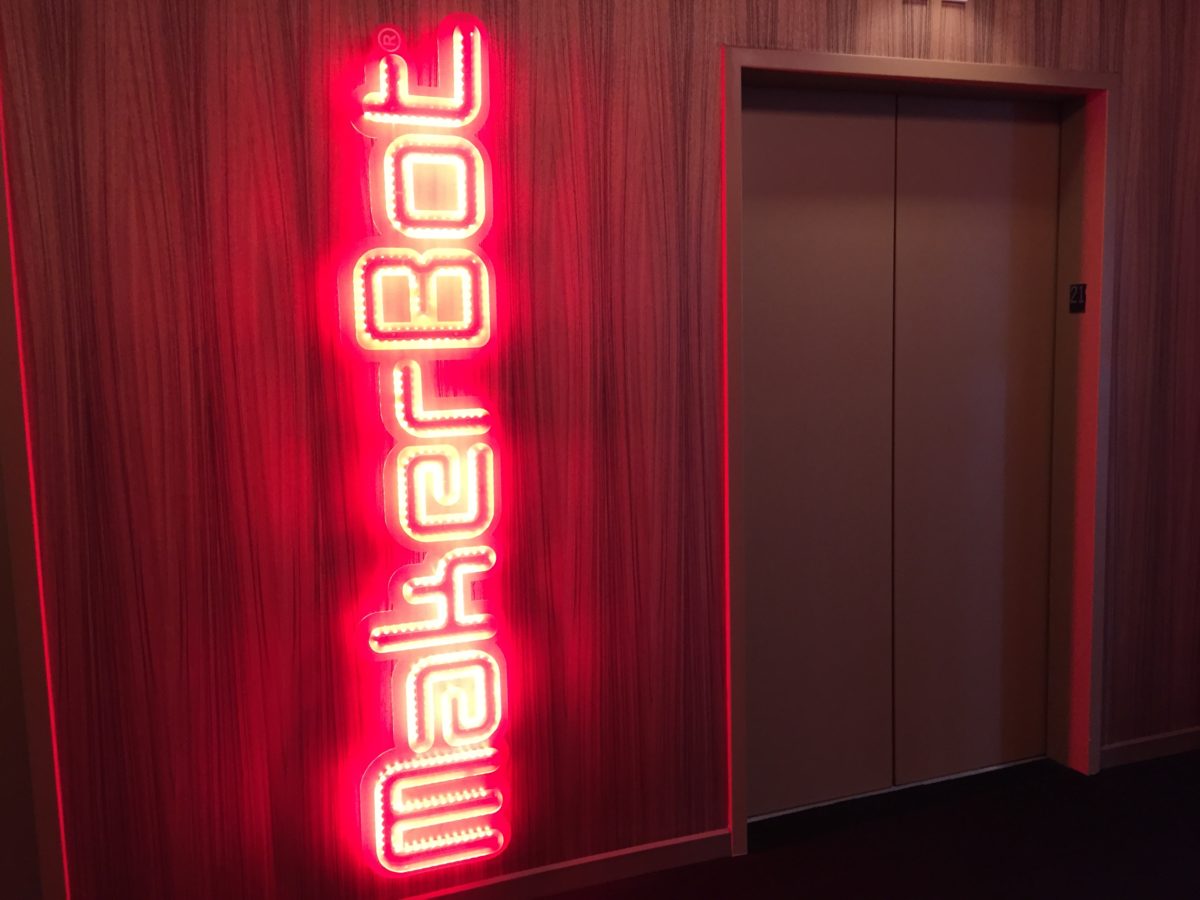The idea wasn’t always that the 3D printing revolution would end up as a K-12 educational tool, but here we are.
Downtown Brooklyn’s MakerBot announced this week its plan to continue to grow its sales in its the education space, launching the MakerBot Educator’s Guidebook and MyMakerBot, a cloud-based platform for classroom printing.
“We have renewed confidence that we’re on the right path,” said Josh Snider, a spokesman for the company. “Our new CEO, Nadav, has kind of righted the ship.”
Nadav Goshen is the company’s third CEO since 2015. He took over from Jonathan Jaglom in January, who himself was one CEO removed from MakerBot’s founder, Bre Pettis.
“There’s definitely been a good emphasis on focus where in the past the focus wasn’t there,” added Drew Lentz, the manager of MakerBot Learning, the company’s education team.
To understand where MakerBot is, one needs a little recollection of where it’s been.
We're actually focusing on a real audience rather than trying the flashiest things.
In 2011, Pettis launched MakerBot onto the national scale, appearing on the Colbert Report with scanned and printed replicas of Stephen Colbert’s head, among other things. The following year, holding a MakerBot Replicator 2, he stood on the cover of Wired, behind the words “THIS MACHINE WILL CHANGE THE WORLD.” In 2013, 3D-printing giant Stratasys bought MakerBot for more than $400 million. Pettis’s (and MakerBot’s) dream was to create a world where people could manufacture just about anything out of their home.
With the MakerBot Educators Guidebook & cloud-platform My MakerBot, classrooms design and #3Dprint faster than ever https://t.co/f6YMfOgtuH pic.twitter.com/bRSSntgkmx
— MakerBot (@makerbot) July 6, 2017
The dream, though maybe not dead, certainly has not yet been realized.
In the years that followed, MakerBot didn’t sell like it hoped it would. Through numerous rounds of layoffs, its number of employees dwindled from an estimated 600 to currently around 150. In 2016 it closed down its Industry City factory that produced its machines and moved production to China. Late last year, Wired had a new feature story on MakerBot: “THE 3D PRINTING REVOLUTION THAT WASN’T,” written by Technical.ly alum Andrew Zaleski.
The thing is, though, MakerBot’s still here. It’s 2017 and its employees seem excited about the future.
“There was no information on how people were using it or what to expect from it and as a result we explored products in a ton of different markets at once,” Snider said. “We kind of spent a lot of time chasing a market instead of focusing one we’d created.”
But with education, MakerBot sees demand growing from the ground up.
“There’s been a huge push over the last 10 or so years on STEM and on getting real technology into the hands of students,” explained Lentz, on the adoption of MakerBot’s 3D printers in schools. “At first it happened without us trying to make it happen, like four years ago. Out of that came Thingiverse Education, which is content for teachers who really didn’t have a lot of content for the classroom.”
Thingiverse Education is a database of 3D-printing projects. Teachers can upload designs and projects and also search by subject and find files that can be printed out by students.
As the number of entries in Thingiverse grew, MakerBot saw that there was a market need there, and that’s where the idea for its Educator’s Guidebook came from. In the guidebook, teachers are given instructions on best practices in 3D printing and how to create lesson plans out of projects on Thingiverse. More than 14,000 projects were downloaded last month, according to MakerBot. Those projects include stuff like a 3D-printed map of the world, where each piece that’s printed out is a country. That was uploaded by a third-grade teacher in Madison, Wis. There are hundreds more like it in the database.
The most popular item to print? The fidget spinner, of course.
All of this is not to say that MakerBot has given up on its professional customers: makers, designers who use the machines for prototyping, engineers and the rest. The company is still working on a new model 3D printer which it expects will be faster, more reliable and simpler to use.
The company hasn’t given up on the idea that 3D printing can change the world, either, though it seems to have changed its expectations for what the timeline of such a change might be.
“We’re actually focusing on a real audience rather than trying the flashiest things,” Lentz said.
It’s a departure from the early days, but maybe that’s a revolution worth fighting for.
Join the conversation!
Find news, events, jobs and people who share your interests on Technical.ly's open community Slack

